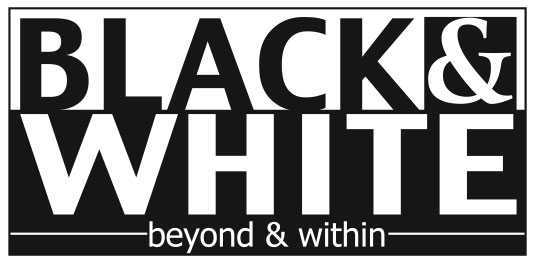
Siham Ahmed Saeed Rashid Al Riyami
Omani writer and educator (OMAN)
Who would have ever thought that you would not have to be physically present in a classroom to learn? While many mulled over this possibility and were experimenting with it during the pre-COVID-19 days, a tiny virus has made this not only possible, but perhaps also a hard future reality.
You don’t have to be physically present anymore in a classroom to be imparted with quality education. But you have to be present – online. While COVID-19 spells disaster in any form, it has however nudged the education scene into a new era: the revolution of online education.
Not only is online education or remote learning valid and useful for students, but as they, it is also the new norm.
Three phases of remote learning
Let us look at the future of remote learning during and after the virus pandemic. Remote learning is likely to go through three phases while the pandemic progresses.
Closed schools – remote learning is going to be the main way learning is delivered during school closure for both kindergarten and other schools. Many schools and teachers are already delivering remote learning using a range of different tools and online learning resources. School leaders have already put plans in place across the globe to deliver learning and carry out different types of student assessments where possible. Many countries are now moving out of this phase and starting to re-open schools, but under very different circumstances of course.
Even when schools re-open they may need to close again if the virus peaks again. This might be in certain cities or areas. We have seen this happen very recently in South Korea. Schools need to have plans in place should they open and have to close again.
Blended delivery – as schools re-open they are not going to be able to accommodate the number of students they did previously due to the need to maintain distances between students. Different grades will start school again at different stages. During this phase a mix of limited classroom contact and continued remote teaching and learning is likely to be used. How quickly different countries move to this phase is going to be linked to infection rates and is likely to vary. How long this phase will last will depend on medical developments with treatments and vaccines for the virus, but it’s likely to be many months, possibly years away.
Schools fully open – once the threat from the virus is eliminated and it is safe to do so schools will be able to return to full capacity and a normal timetable. However, many experts believe that a permanent change has taken place in education where remote learning will continue to be used in both government and private schools even once the virus has passed. It may now be possible that in the private school’s sector that new companies and operators will enter the market using remote learning much more extensively, perhaps even fully remote schools. Time will tell.
The shift to more extensive use of remote learning in school education has taken place. Before the virus outbreak the higher education sector was at the forefront of remote delivery, KGs and schools have seen a revolution in the last few months, it’s unlikely the education sector will simply return to pre-virus arrangements once the pandemic is over.
Collaboration is the key to success
Now the important question is how to use public-private-partnerships to support education during this pandemic?
Collaboration during crisis like this is recognised by many countries globally as a critical factor, for the education sector this question can be broken down into different areas.
Collaboration between government and private schools’ sectors – The pandemic presents an opportunity for this type of cross-sector collaboration. Regulators such as ministries of education have a role to play here by encouraging and facilitating collaboration as both sectors face new pressures. The sharing of knowledge and information for the benefit of all through electronic forums and portals is likely to yield results in the quickest and safest way.
There are a variety of issues that both sectors face including:
Health and safety – Obviously the most important aspects at the moment are how will schools open safely and what precautions are effective? This is probably the number one priority for both sectors. It is important that all types of schools are able to share experiences and learn from each other in this critical area.
Leadership and management – Leaders and managers need to be able to share knowledge and experience with each other across both sectors. Planning, teaching and learning, assessment and the use of ICT systems going forward, is going to be of interest to both sectors.
Teaching, learning and assessment – Teachers are already using a variety of online forums to share ideas and information already and these are proving to be very valuable. What works with remote teaching, how reliable student assessment can be carried out, what online learning resources are available.
It is important that this sharing of knowledge and experience across both private and government sectors of education is voluntary and grows organically. It is the role of governments to encourage and support this knowledge transfer by providing the tools to support this change.
Collaboration between education and private sector businesses – The education sector is already collaborating with non-education private sector businesses to support learning during the virus pandemic. A couple of examples are worth mentioning:
The government in Paraguay recently signed a contract with Microsoft to cover the e-learning needs of 1.2 million students at zero cost.
In China, the ministry of industry and information technology has done a deal with private telecom operators and technology companies to back up the schools e-learning platform with 7,000 servers and 90 terabytes of bandwidth.
Private sector businesses have a huge stake in children’s education – it is their future workforce. Collaboration between government agencies and private companies of any type is a true ‘win win’ in the current circumstances.
Remote learning is not without its own problems
What are the challenges of using remote learning?
There are many, for schools, teachers, parents and students. There are a couple of issues worth mentioning.
Access to remote learning – Access to education for all is considered a basic human right but the current situation has put this into serious question. Briefly here are a few examples of the challenges facing remote learning, particularly using internet-based e-learning.
Connectivity – Many of us take high-speed broadband connections with multiple devices in the house for granted, but this is not the case for lots of families. Those in remote areas with little or no connectivity face real problems, as do those from poor families who can’t afford the devices, or to connect.
For example, a family with three children and only their mother’s smart phone to connect for a short time are not going to be able to use remote e-learning like others. We need more flexible responses than simply video conferencing and YouTube type videos to support learning for all. In some cases, we may need to use books and paper because it’s the only way that works.
Flexibility is going to be key; schools, teachers and local communities need to work together to come up with local solutions. Regulators such as ministries and qualification bodies must work creatively to ensure access to education for all.
Special needs students – This is a huge challenge for everyone but cannot be ignored, the most vulnerable within society cannot be overlooked during these most difficult of times. All involved in education must come up with creative ways of addressing the needs of students with disabilities or learning difficulties.
Many may have problems accessing or using remote learning and they may feel particularly isolated. It is incumbent on us all not to allow the door to close on education for all these young people. Regulators, curriculum bodies, schools and teachers cannot allow discrimination against these groups to become the new normal. All involved in education need to engage with experts and specialist charities to take advice and design flexible responses so that nobody is left behind.
Students’ mental health – Being in lockdown, not seeing your friends, and staying away from other students even when schools re-open are going to put huge strains on the mental health of many children. Mental health is hugely important and it has a significant impact on learning as well. We need to be aware that schools provide much more than learning curricula.
It is important that teachers, schools and regulators recognise this and provide the support that children and young people will need. Ministries in some countries such as Australia are starting to provide online support to schools and teachers in this area. All those involved in education and remote learning must address this issue or face bigger problems later. Parents, schools and teachers need to have their awareness of this issue raised and be provided with the tools and skills to deal with it as effectively as possible.

0 Comments